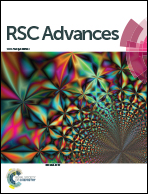Injectable alginate microsphere/PLGA–PEG–PLGA composite hydrogels for sustained drug release
Abstract
Microspheres and in situ formed hydrogels are widely used in drug delivery systems due to their excellent biocompatibility and convenient administration. However, both of them often show burst-release behavior. To overcome this disadvantage, a new composite system combining the advantages of microspheres and injectable hydrogels was prepared via mixing drug-loaded alginate microspheres with poly(D,L-lactide-co-glycolide-b-ethylene glycol-b-D,L-lactide-co-glycolide) (PLGA–PEG–PLGA) hydrogels without using any surfactant or organic solvent. Alginate microspheres with tunable size were prepared by an electrospinning method. The structure and surface morphology of microspheres were observed by optical microscopy and scanning electron microscopy (SEM), and the rheological properties of the PLGA–PEG–PLGA hydrogels were evaluated using a rheometer. 5-Fluorouracil (5-Fu) and theophylline (TP) were chosen as model drugs, and were encapsulated in the composite hydrogels. The drug release results demonstrate that this combined system could apparently solve the burst-release problem of both hydrogels and microspheres and achieve a sustained release through the double barriers by greatly reducing the diffusion of water-soluble drugs. These results indicate that the double-barrier composite systems have great potential application in sustained release systems.


 Please wait while we load your content...
Please wait while we load your content...